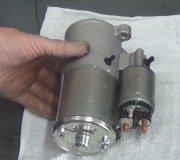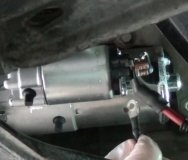If you can get it to act up long enough, check for spark. Chances are it will be missing. The main suspect will be the camshaft position sensor. Next will be the crankshaft position sensor. The Engine Computer needs to see engine rotation, (cranking or running), then it turns on the automatic shutdown (ASD) relay. That relay sends current to the ignition coil pack, injectors, alternator field, and fuel pump or pump relay. It's the signals from those two sensors, and they must be in sync, that tells the computer the engine is rotating. It is fairly common for those sensors to fail by becoming heat-sensitive, then they work again after they cool down, but that typically takes from a half hour to an hour. A sensor could just be intermittent and cause the symptoms you're having, but corroded connector terminals would also be a good suspect.
The goal now is to get a diagnostic fault code to set related to the stalling problem. That often doesn't happen for these two sensors. It takes time for the computer to decide to set a code once it sees all the right conditions, and that can occur in the time it takes for the stalled car to coast to a stop. After that, and since disconnecting the battery erased any codes, they may not set again from just cranking the engine. This is where you need a scanner. I have a Chrysler DRB3 because all of my many vehicles are Chrysler products. Under "Sensor Data", it lists those two sensors with "Present" or "No" to tell you if it's seeing those signals. I have a DRB2 also but I can't remember if that shows those sensors that way too. You can find DRB2s on eBay for less than a hundred dollars, but I don't think they will work on '96 models. They use a cartridge specific to a group of models, and those only went up to '94 models. '95 models used the '94 cartridge.
The DRB3 doesn't use cartridges, but if you add a plug-in card so it will work on vehicles back to '94 models, that "SuperCard 2" also lets you do emissions-related testing on any car brand sold in the U.S, '96 and newer models. A lot of independent shops bought them for that reason. This scanner was phased out on different models between about 2004 through 2008, as I recall. Along with that, some of the aftermarket stuff is catching up to what the manufacturer's equipment does, so there will likely be a lot of DRB3 showing up on eBay. I sold three of them there years ago to pay for the fourth one that I kept.
Without a scanner you have no way of seeing what the Engine Computer is seeing or doing. If you're going to be working on this car a lot yourself, buying a used one will cost less in the long run compared to running to a repair shop multiple times. There are some good aftermarket scanners too, but I'm not real familiar with using them or knowing what's good and what isn't. Watch out for the simple code readers. Those sell new for less than a hundred dollars. They don't do much more than what you can do by cycling the ignition switch. No other manufacturer makes reading codes yourself as easy as Chrysler, so code readers have more value to those other people.
Getting back to those sensors, most scanners have a record feature that is useful for finding intermittent problems like you're having. Often a signal drops out from a sensor momentarily and you can see it switch from "present" to "no", and back again while you're driving, but scanners update their displays much slower than the speed at which the computers on the car talk back and forth to each other. A dropout is real easy to miss. With the record feature, you press the "record" button when the hiccup occurs. Since the data travels through the scanner's memory, the recording actually starts a couple of seconds before you pressed the button. Later, you can replay that data slowly to see what changed when the problem occurred. There can be an input sensor problem, as in a signal dropping out from the cam or crank sensor, or you might see an output problem related to what happened as a result of the cause. As an example, the camshaft position sensor signal is an input that could be found to be dropping out, or the ASD relay could be turning off because the computer did that in response to that loss of signal. For my cars, there's almost 40 things to look at related to information the computer is acting on.
The other benefit of a scanner is when there are no fault codes being set. Without retyping all the theory I just posted for someone else, I can sum up my novel by saying a throttle position sensor, for example, has mechanical stops inside it that limit its range of signal voltage from 0.5 to 4.5 volts. Voltages outside that range, (usually caused by wiring problems, not sensor problems), are what sets a diagnostic fault code. However, if the voltage reported is wrong but within that acceptable range, no code will be set, but a tenth of a volt error can have a noticeable effect on engine performance. Now, this is rare for a throttle position sensor to do that, but it serves to illustrate my sad story.
With a little experience, you will start to see things that aren't right. For example, if the engine has been off all day, and it's 60 degrees outside, you know there's a problem with the coolant temperature sensor if it's reporting 10 degrees. Ten degrees is a valid value even though it is wrong, and the computer will tweak its fuel metering calculations based on that incorrect information. No fault code would be set related to the coolant temperature sensor because 10 degrees is a valid number, but you might get a fault code for "running rich too long" due to the extra fuel the computer is asking for. "Running rich too long" or "lean too long" is the only information you'll get from those codes. It's up to you to figure out why, and there's little chance of doing that without a scanner.
As a final thought, a lot of auto parts stores rent or borrow tools, and they might have a scanner you can use. If you like it, you can buy one like it. If possible, try a few different brands to see which one is easiest to navigate and figure out.
Friday, October 30th, 2015 AT 8:54 PM



